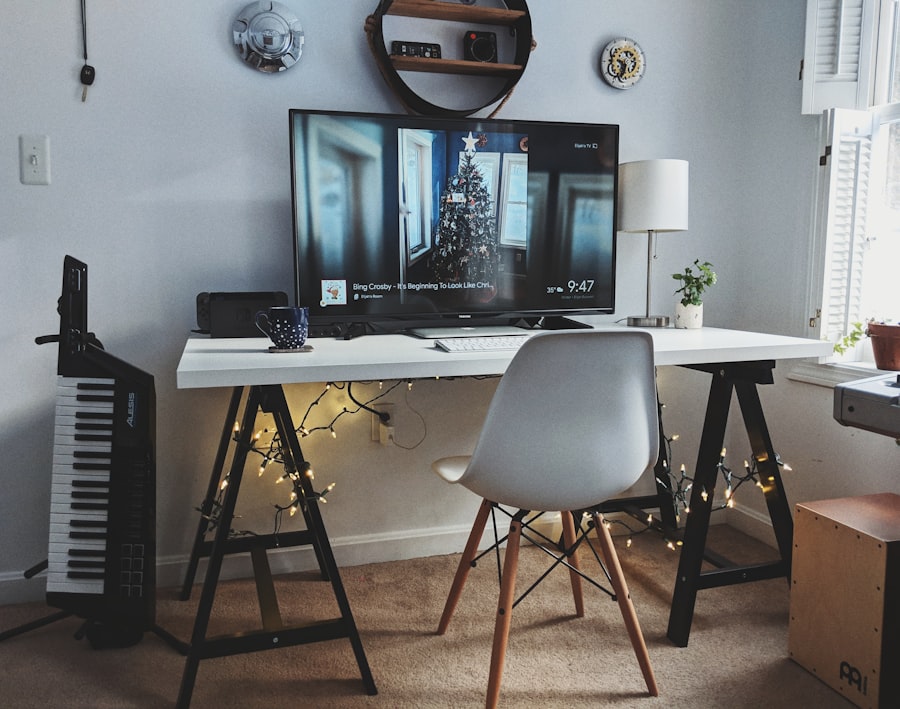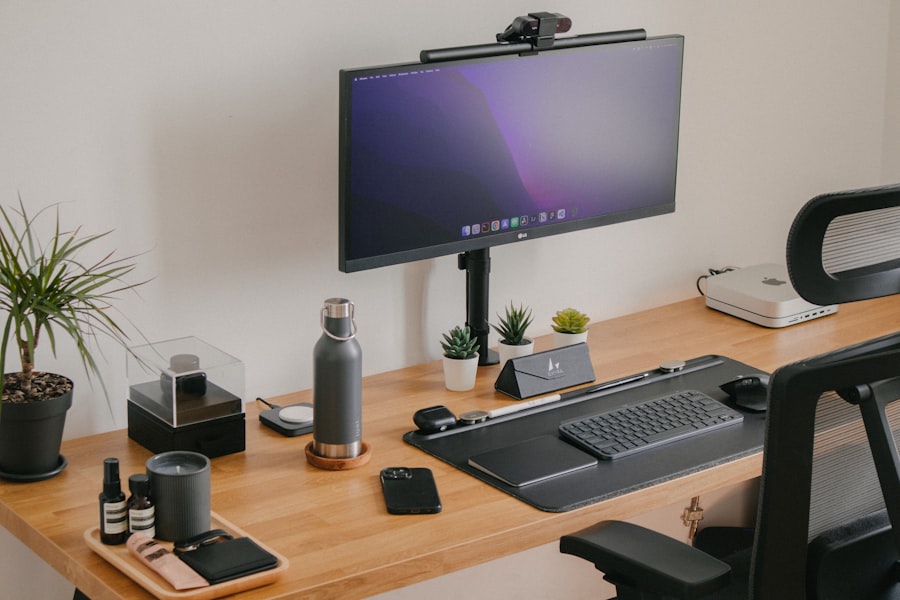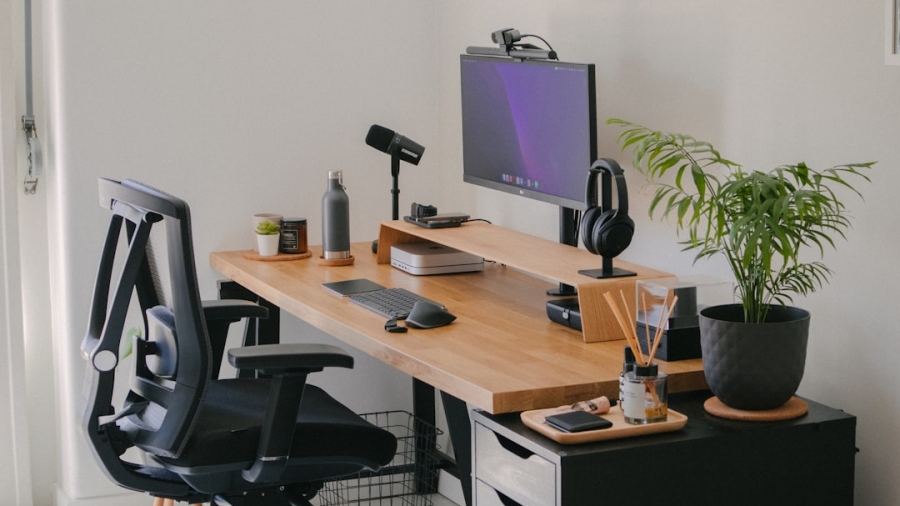Before embarking on any furnishing project, it is crucial to take a step back and evaluate your specific needs and the space you have available. This initial assessment serves as the foundation for all subsequent decisions, ensuring that every piece of furniture and equipment you choose aligns with your lifestyle and functional requirements. Begin by considering how you intend to use the space.
Are you creating a home office, a cozy reading nook, or perhaps a multifunctional living area? Understanding the primary purpose of the room will guide your choices, allowing you to prioritize essential items while avoiding unnecessary clutter. Additionally, take precise measurements of the area to determine how much room you have to work with.
This will help you visualize the layout and ensure that the furniture you select fits comfortably without overwhelming the space. Moreover, it is essential to consider the flow of movement within the area. A well-designed space should facilitate easy navigation, allowing individuals to move freely without obstruction.
Think about how many people will typically use the space at one time and what activities they will engage in. For instance, if you are designing a family room, you may want to ensure there is ample seating for everyone while also leaving enough room for children to play. By carefully assessing your needs and the dimensions of your space, you can create a harmonious environment that is both functional and aesthetically pleasing.
This thoughtful approach will not only enhance your comfort but also contribute to a more organized and inviting atmosphere.
Key Takeaways
- Assess your needs and space before purchasing furniture and equipment to ensure they fit and serve their purpose effectively.
- Find affordable furniture and equipment by comparing prices, looking for sales, and considering budget-friendly options.
- Utilize multi-purpose furniture to maximize space and functionality in your home or office.
- Look for secondhand or refurbished items to save money and reduce waste.
- Consider DIY solutions for furniture and organization to personalize your space and save money.
Find Affordable Furniture and Equipment
Once you have a clear understanding of your needs and space, the next step is to seek out affordable furniture and equipment that meets those requirements without breaking the bank. The market is flooded with options, ranging from budget-friendly retailers to online marketplaces that offer competitive prices. Start by exploring local furniture stores, discount outlets, and even big-box retailers that often have sales or clearance sections.
These places can be treasure troves for finding quality items at reduced prices. Additionally, consider shopping during holiday sales or seasonal promotions, as many retailers offer significant discounts during these times. In addition to traditional retail options, online platforms such as e-commerce websites and social media marketplaces can provide a wealth of affordable choices.
Websites like Amazon, Wayfair, or Overstock often feature sales on furniture and home goods, making it easier to find items that fit your budget. Furthermore, local community groups on platforms like Facebook or Craigslist can be excellent resources for discovering gently used items at lower prices. By broadening your search to include both physical stores and online options, you increase your chances of finding high-quality furniture that aligns with your aesthetic preferences while remaining within your financial constraints.
Utilize Multi-Purpose Furniture

In today’s fast-paced world, where space is often at a premium, multi-purpose furniture has emerged as a game-changer for maximizing functionality without sacrificing style. These versatile pieces serve dual or even triple functions, allowing you to make the most of every square inch in your home. For instance, consider investing in a sofa bed that can transform from a comfortable seating area during the day into a cozy sleeping space at night.
Similarly, ottomans with hidden storage compartments can provide both extra seating and a place to stow away blankets or magazines. By incorporating multi-purpose furniture into your design scheme, you can create a more efficient living environment that adapts to your changing needs. Moreover, multi-purpose furniture not only enhances functionality but also contributes to a more streamlined aesthetic.
By reducing the number of individual pieces required in a room, you can create a cleaner look that feels less cluttered and more inviting. For example, a dining table that doubles as a workspace can eliminate the need for an additional desk in smaller homes or apartments. This approach not only saves space but also encourages a more cohesive design throughout your living area.
As you explore options for multi-purpose furniture, keep in mind the importance of selecting items that reflect your personal style while also serving practical purposes. This balance will ensure that your space remains both functional and visually appealing.
Look for Secondhand or Refurbished Items
One of the most sustainable and cost-effective ways to furnish your home is by seeking out secondhand or refurbished items. Thrift stores, consignment shops, and online marketplaces are excellent sources for finding unique pieces that add character to your space while being easy on your wallet. Shopping secondhand not only allows you to discover one-of-a-kind items with history but also promotes environmental sustainability by reducing waste and encouraging recycling.
Many people overlook the potential of pre-owned furniture, but with a little creativity and vision, these items can be transformed into stunning focal points in your home. Refurbished items are another fantastic option for those looking to save money while still acquiring quality furniture. Many companies specialize in restoring vintage pieces or giving new life to worn-out items through refinishing or reupholstering.
This not only extends the lifespan of furniture but also allows you to customize pieces to fit your personal style. When considering secondhand or refurbished options, be sure to inspect items carefully for quality and durability. Look for solid construction and materials that will stand the test of time.
By embracing secondhand shopping and refurbished items, you can create a stylish and unique living space while also making environmentally conscious choices.
Consider DIY Solutions
For those who enjoy hands-on projects or are looking to save money on furnishings, DIY solutions can be an incredibly rewarding avenue to explore. Creating your own furniture or decor allows for complete customization tailored to your specific needs and style preferences. Whether it’s building a simple bookshelf from reclaimed wood or crafting decorative wall art from everyday materials, DIY projects can infuse your space with personal touches that reflect your individuality.
Additionally, engaging in DIY projects can be a fulfilling way to spend time creatively while also providing an opportunity to learn new skills. Moreover, DIY solutions often come with significant cost savings compared to purchasing ready-made items from stores. With some basic tools and materials, you can create functional pieces that might otherwise be prohibitively expensive if bought new.
Online platforms like Pinterest or YouTube offer countless tutorials and inspiration for DIY projects ranging from furniture building to home decor crafts. As you embark on these projects, remember that imperfections can add charm and character; not every piece needs to be flawless to be beautiful. By embracing DIY solutions, you not only save money but also cultivate a sense of pride in creating a home that is uniquely yours.
Organize and Declutter

Creating a Serene Living Space
Effective organization and decluttering are crucial elements in creating an inviting living space. Over time, belongings can accumulate, leading to cluttered environments that feel chaotic rather than serene. To combat this issue, start by assessing each area of your home systematically.
Implementing Organizational Systems
Identify items that are no longer needed or used regularly; these can be donated or discarded to free up valuable space. Implementing organizational systems such as bins, baskets, or shelving units can help maintain order by providing designated spots for various items. A well-organized space not only looks better but also enhances functionality by making it easier to find what you need when you need it.
The Psychological Benefits of Decluttering
In addition to physical organization, consider the psychological benefits of decluttering. A tidy environment can significantly impact mental well-being by reducing stress and promoting clarity of thought. When spaces are organized and free from excess clutter, they become more conducive to relaxation and productivity alike.
Maintaining a Balanced Lifestyle
Establishing routines for regular decluttering—such as seasonal cleanouts—can help maintain an organized home over time. By prioritizing organization and decluttering as part of your furnishing strategy, you create an environment that feels open and inviting while also supporting a more balanced lifestyle.
Use Natural Lighting and Greenery
Incorporating natural lighting and greenery into your living space can dramatically enhance its overall ambiance while promoting well-being. Natural light has been shown to improve mood and productivity; therefore, maximizing sunlight exposure should be a priority when designing any room. Consider using sheer curtains or blinds that allow light to filter through while still providing privacy.
Positioning mirrors strategically can also help reflect light throughout the space, making it feel larger and more open. By embracing natural light as an integral part of your design scheme, you create an uplifting atmosphere that fosters positivity. Adding greenery through houseplants not only beautifies your home but also contributes to improved air quality and mental health benefits.
Plants have been shown to reduce stress levels while enhancing focus and creativity—making them perfect companions for any workspace or relaxation area. Choose low-maintenance varieties if you’re new to plant care; options like succulents or snake plants thrive with minimal attention while still adding life to your environment. By thoughtfully integrating natural lighting and greenery into your home design, you cultivate an inviting atmosphere that nurtures both physical comfort and emotional well-being.
Take Advantage of Technology for Cost-Effective Solutions
In our increasingly digital world, technology offers numerous cost-effective solutions for enhancing home design without overspending on furnishings or decor. Virtual reality apps allow users to visualize how different pieces will look in their spaces before making purchases—eliminating guesswork and potential buyer’s remorse. Additionally, augmented reality tools enable users to see how colors or patterns will appear on walls or furniture in real-time through their smartphones or tablets.
These technological advancements empower homeowners to make informed decisions about their purchases while ensuring they align with their overall vision. Furthermore, technology can assist in finding deals on furniture through price comparison websites or apps that alert users when items go on sale at their favorite retailers. Social media platforms often feature local buy/sell groups where individuals can find secondhand items at reduced prices—making it easier than ever to furnish a home affordably.
By leveraging technology effectively throughout the furnishing process—from visualization tools to online marketplaces—you can create a stylish living space without straining your budget or compromising on quality. In conclusion, creating an inviting and functional living space requires careful consideration of various factors ranging from assessing needs and space to utilizing technology for cost-effective solutions. By following these guidelines—such as seeking affordable furniture options, embracing multi-purpose designs, exploring secondhand markets, engaging in DIY projects, organizing effectively, incorporating natural elements, and leveraging technology—you can craft a home that reflects your personal style while remaining budget-friendly.
Ultimately, the goal is not just about filling a space with furniture but rather curating an environment that enhances comfort, functionality, and well-being for all who inhabit it.
If you’re setting up a home office on a budget, you might also be interested in optimizing your digital tools and applications to enhance productivity. A great resource to explore is an article on the best Android apps for 2023, which can help you find cost-effective software solutions for your new workspace. Whether you need apps for communication, project management, or time tracking, this guide offers a comprehensive look at the top options available. Check out the article here to discover which apps can best support your home office needs.
FAQs
What are the essential items needed for setting up a home office on a budget?
Essential items for setting up a home office on a budget include a desk, chair, computer, internet connection, and basic office supplies such as pens, paper, and a printer.
How can I save money on furniture for my home office?
You can save money on furniture for your home office by purchasing second-hand furniture, looking for sales and discounts, or repurposing furniture you already have in your home.
What are some cost-effective ways to set up a computer for a home office?
Cost-effective ways to set up a computer for a home office include purchasing a refurbished computer, using a laptop instead of a desktop, or taking advantage of special deals and promotions from computer retailers.
How can I create a productive work environment in my home office without spending a lot of money?
You can create a productive work environment in your home office without spending a lot of money by organizing and decluttering the space, using natural light and inexpensive lighting options, and incorporating plants and other inexpensive decor elements.
What are some affordable storage solutions for a home office?
Affordable storage solutions for a home office include using shelves, bins, and baskets from discount stores, repurposing items from around the house for storage, and utilizing digital storage options to reduce the need for physical storage space.

